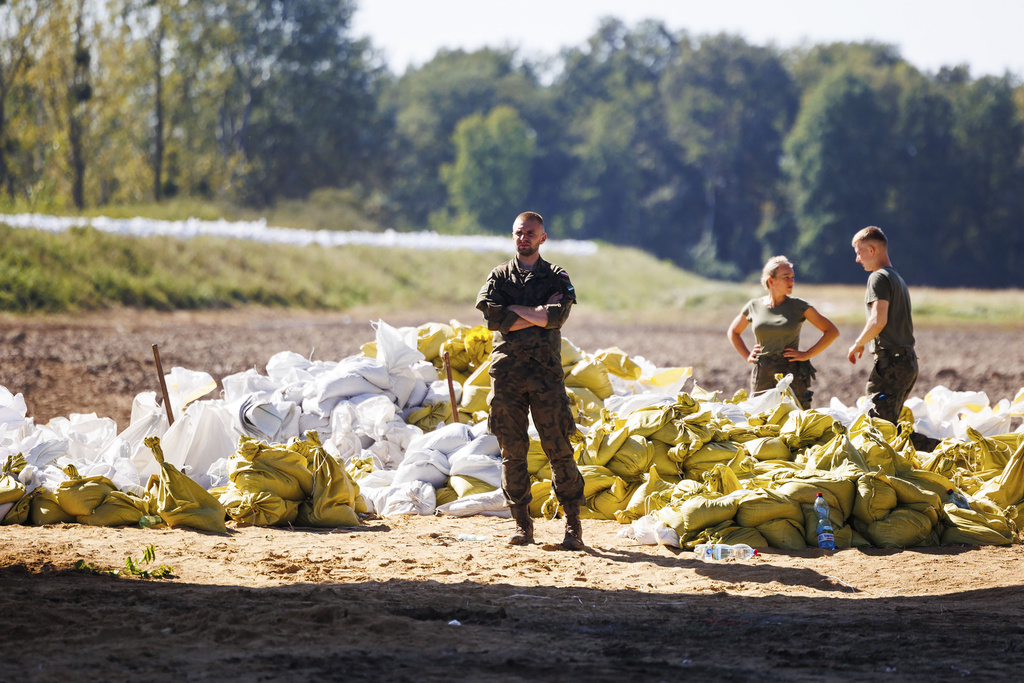In the wake of the recent devastating floods in Poland, government officials have acknowledged the need for improvements in disaster response and building safety assessments.
Krzysztof Paszyk, PSL MP and minister of development and technology, discussed the government’s ongoing efforts to evaluate and repair the damage caused by the disaster during a televised interview with TVN24.
Paszyk confirmed that over 6,000 buildings have already been identified as requiring either renovation or demolition. However, he warned that this number is likely to increase significantly as more inspections are carried out.
“I conservatively estimate that there will be several thousand more objects. I think around 15,000,” he told the broadcaster.
Paszyk drew comparisons between the current disaster and the catastrophic floods of 1997. While many buildings affected by the 1997 floods were suitable for repair, Paszyk pointed out that the current situation may be worse.
“Several important cities were flooded due to the rupture of embankment dams, and the destructive power of water was particularly strong this time. The percentage of buildings that cannot be rebuilt is expected to be higher,” he said.
The minister acknowledged that the government must “work on improving procedures, coordination, and the flow of information” at various levels of governance in order to respond more effectively in the future. He emphasized that this disaster has provided a harsh lesson for the authorities.
The General Office of Construction Supervision is currently overseeing rapid inspections of the affected buildings to ensure that there is no further danger for residents eager to return to their homes. According to Paszyk, these assessments are being conducted free of charge, and results are expected promptly. “People waiting to assess whether their homes can be renovated or will require demolition will receive these evaluations immediately,” he assured.
In addition to building safety evaluations, the government is coordinating reconstruction efforts. Paszyk confirmed that repairs and the construction of new homes will begin as soon as the inspections are completed. However, he stressed that the sheer scale of the damage means that recovery will be a long and complex process.
The floods, which have been among the worst in Poland’s recent history, caused significant damage across multiple regions. Heavy rainfall led to rivers overflowing, while embankment dams failed, flooding cities and rural areas alike. Emergency services have been stretched thin in their response, and many residents have been displaced.
The disaster has reignited discussions about Poland’s infrastructure and preparedness for climate-related events. Flood prevention systems, dam maintenance, and early warning systems are expected to come under scrutiny in the coming months as the government works to mitigate future risks.
On Tuesday, opposition MPs from the Law and Justice (PiS) party, Kacper Płażyński and Jan Mosiński, gave a press conference about the results of the inspection by Poland’s Institute of Meteorology and Water Management (IMGW), which revealed Prime Minister Donald Tusk had been made aware of warnings about possible flooding several days ahead of time.
“After an inspection at IMGW, we know that warnings about very dangerous weather phenomena that were brewing in Poland were sent directly to Donald Tusk already before 3 p.m. on Sept. 10 this year,” said Płażyński.
MP Mosiński also revealed that on Sept. 10 at 12:00 p.m., Poland also received alerts from the European Flood and Hazard Warning System concerning five rivers in Poland, along with forecasts of heavy rainfall in the southern areas of the country, reports Do Rzeczy.
“Donald Tusk had all the documents, he had all the knowledge, he knew how serious the situation was,” Płażyński added.






